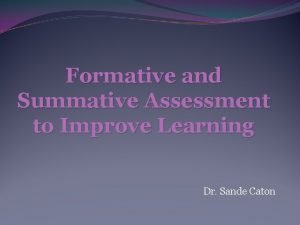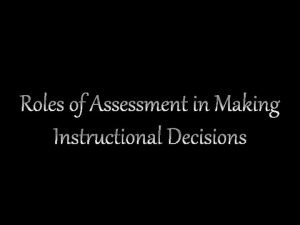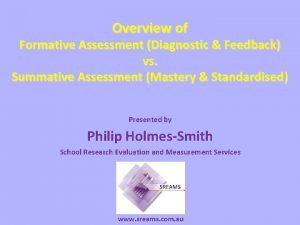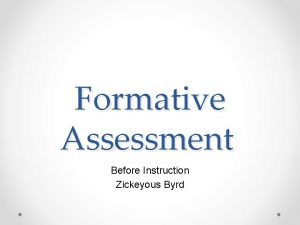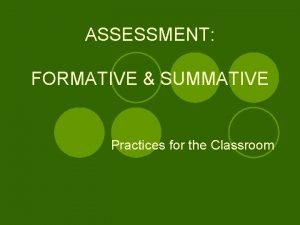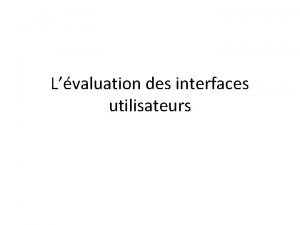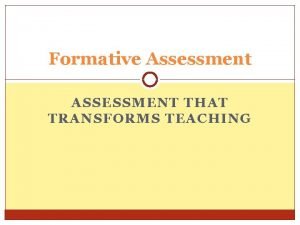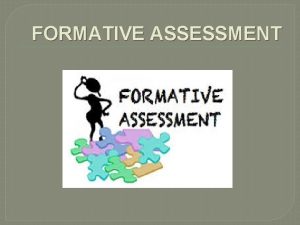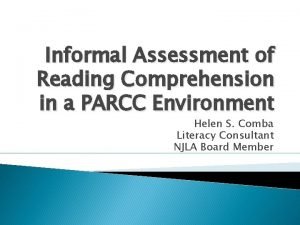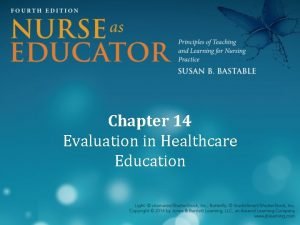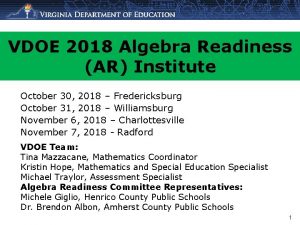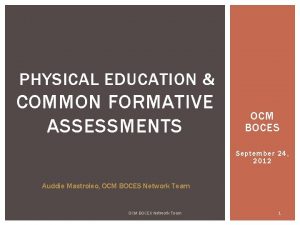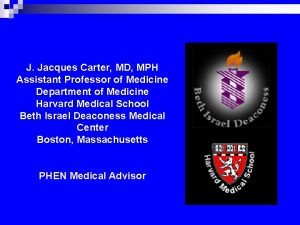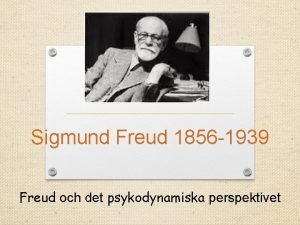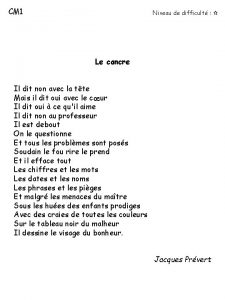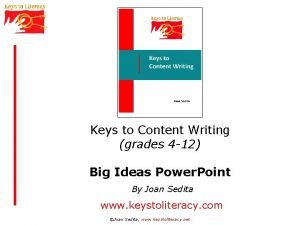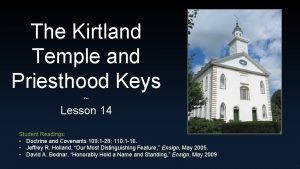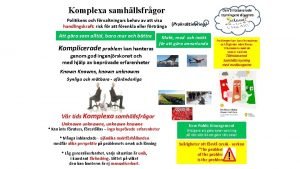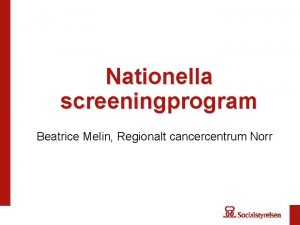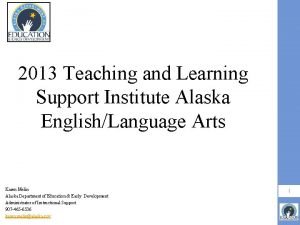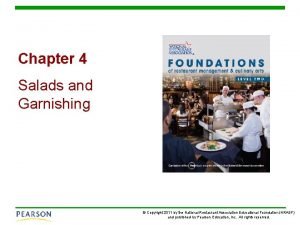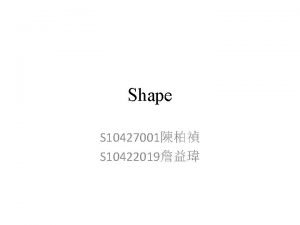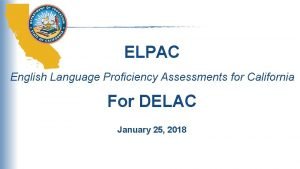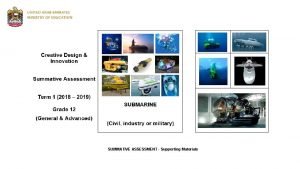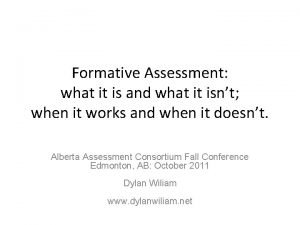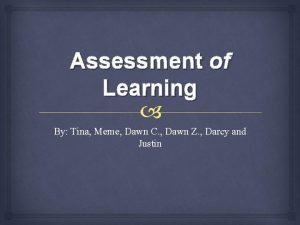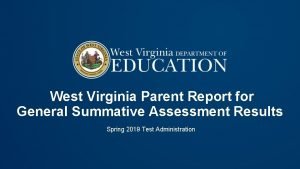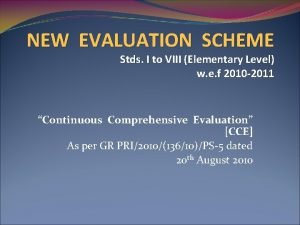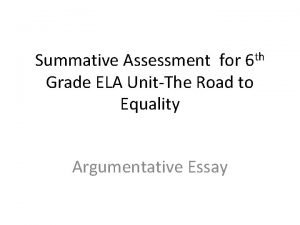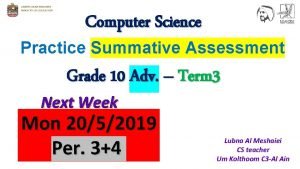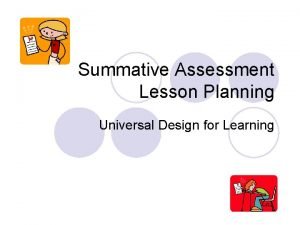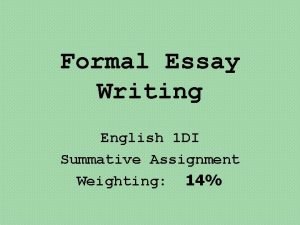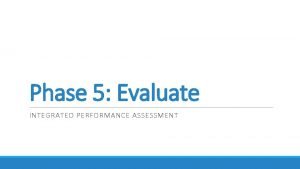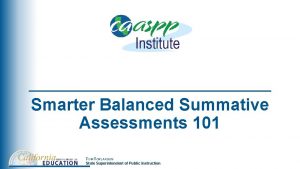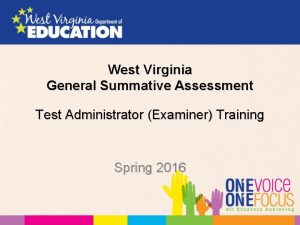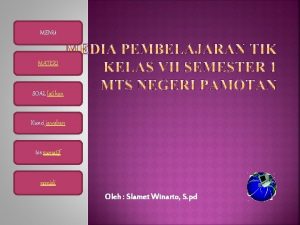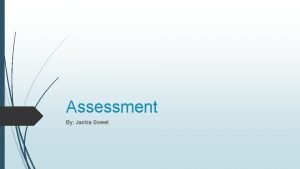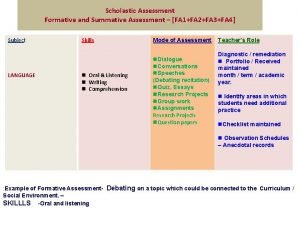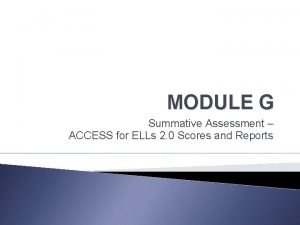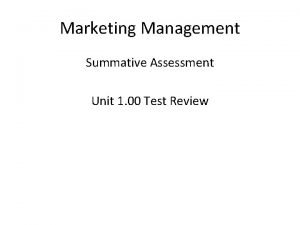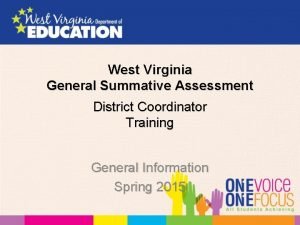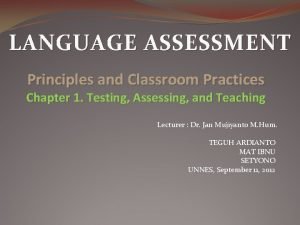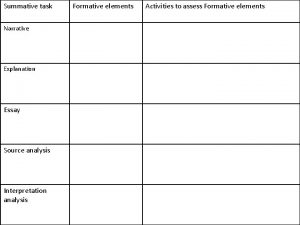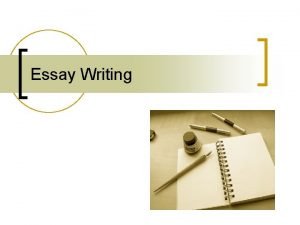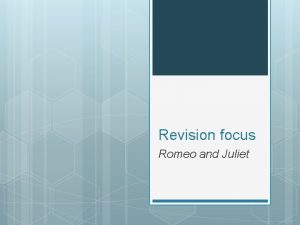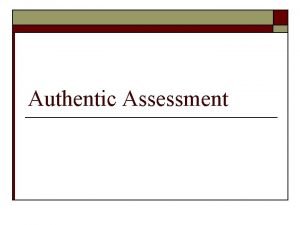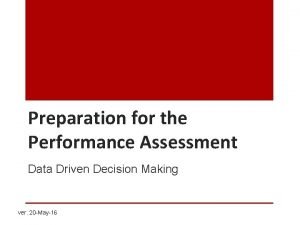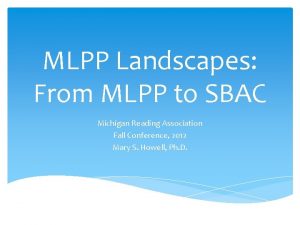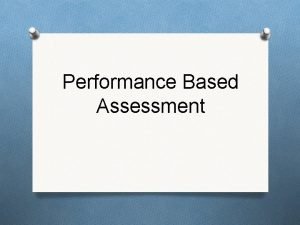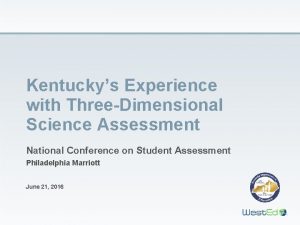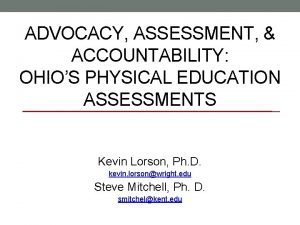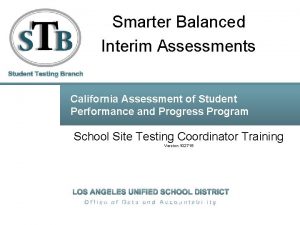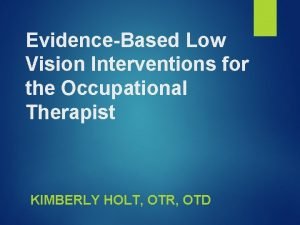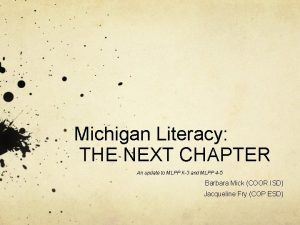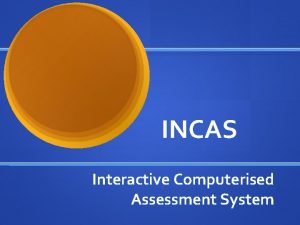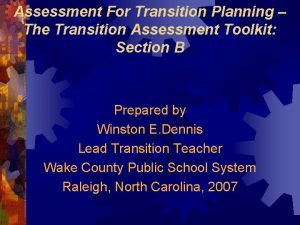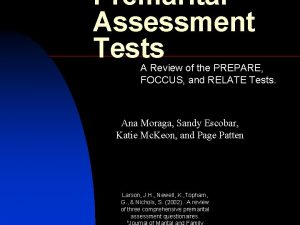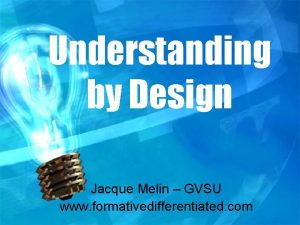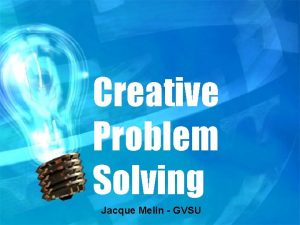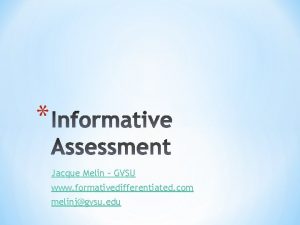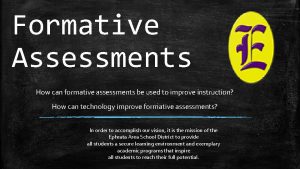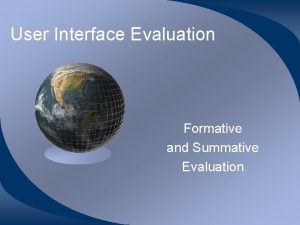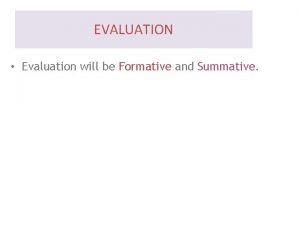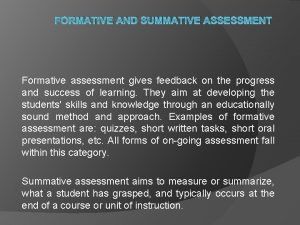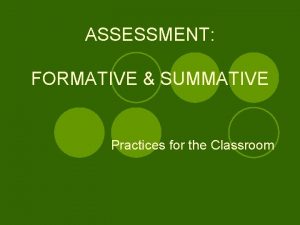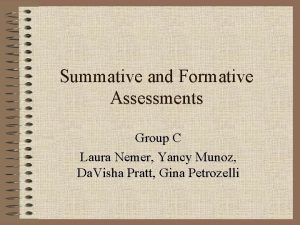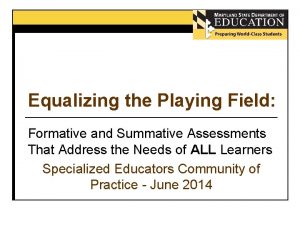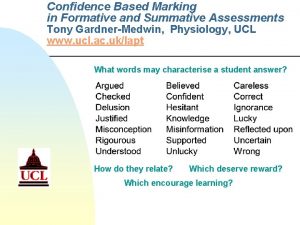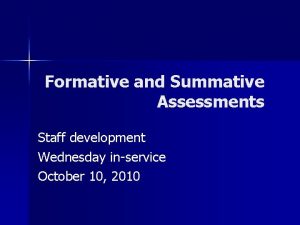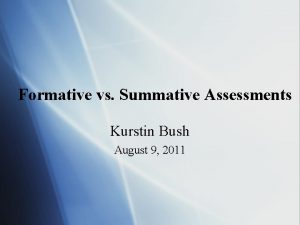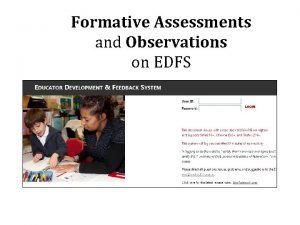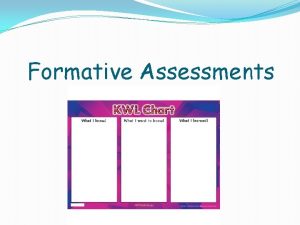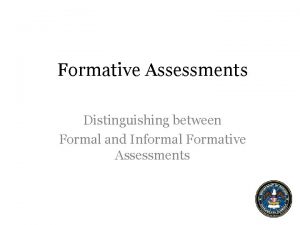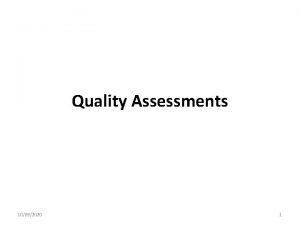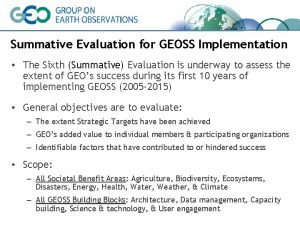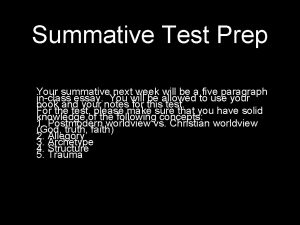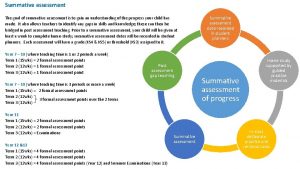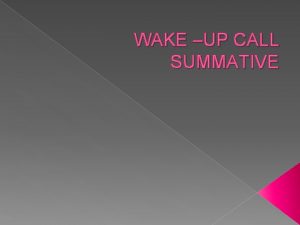KEYS TO QUALITY ASSESSMENTS FORMATIVE SUMMATIVE Jacque Melin







































































- Slides: 71

KEYS TO QUALITY ASSESSMENTS (FORMATIVE & SUMMATIVE) Jacque Melin Grand Valley State University www. formativedifferentiated. com

Thank you for being present today • You can expect: • conversations • activities • movement • learning

I’m counting on you to… • learn from one another • actively participate • commit to a partnership in this journey melinj@gvsu. edu 616 -450 -0998 (cell) 616 -331 -6209 (office)

Today’s Targets • What is a balanced assessment system? Components? Is our system in balance? Where does the formative assessment process fit? • What are the 5 Keys to Quality Classroom Assessments? • How can we use the formative assessment process to help inform our instruction and engage students in learning?

Socrative • Log in as a student. • Room 7615

Partners Clear Purpose Clear Targets Student Involvement Effective Communication Sound Design

What is Assessment? • Jot down your thoughts (alone). • Share at your table

What is Assessment? • The process of collecting information • A gathering of evidence of student learning • A tool to inform and encourage student growth • According to Evangeline Harris Stefanakis (2002), "The word assess comes from the Latin assidere, which means to sit beside. Literally then, to assess means to sit beside the learner. " (p. 9)

Current Practice in Assessment • What do you currently use in your classroom, school, and/or district to find out what each of your students know? • Think of all the types of assessments used. Think very specifically. • (Alone) Using the Post-its, write one type of assessment per sheet. You will have a collection of Post-its when finished. • Set them aside.

“Clear Purpose” Partner • Post-It Sort: Review Post-It collections and assessment categories • Using a piece of chart paper, make two columns labeled “formative” and “summative” Formative Summative • Sort your Post-Its by category • Discuss with your “Clear Purpose” Partner

Formative and Summative Assessment A quick review

Formative Assessment • Takes place WHILE the teaching/learning is happening; • Coaching students to hit a series of learning targets; • Making students partners in their learning; • Descriptive feedback and part of instruction; • Formal or Informal • Assessment FOR learning.

Formative Assessment • Anything can be used as a formative assessment – it is how the assessment is used that makes it formative. The information gathered from formative assessments needs to help the students know their gaps in knowledge and needs to help the teacher adjust teaching when needed.

Summative Assessment • A judgment, usually communicated by a grade or score, about how well students achieve the final learning targets; • Evaluative feedback and after instruction; • Assessment OF learning.

Our Goal • As educators our goal is to create and maintain a balanced assessment system that includes high-quality assessments of (summative) and for (formative) student learning. Different types of assessments Formal and informal

Used with skill, assessment can… • Motivate the unmotivated • Restore students’ desire to learn • Encourage students to keep learning • Create—not simply measure—increased achievement --Stiggins, Arter, Chappuis, & Chappuis, 2011 Form groups of 5

What assessment practices motivate students to improve their learning?

What actions can you take to improve your assessment environment?

Keys to Quality Classroom Assessment Accurate Assessment Clear Targets Clear Purposes Assess What? What are the learning targets? Are they clear? Are they good? Why Assess? What’s the purpose? Who will use results? Sound Design Assess How? What method? Sampled how? Avoid bias how? Effective Communication Effectively Used Communicate How? How manage information? How report? Student Involvement Students are users, too. Students need to understand learning targets, too. Students can participate in the assessment process, too. Students can track progress and communicate, too.

Key 1: Clear Purpose • Why assess? • What’s the purpose? • Who will use the results?

The ultimate user of assessment information is the student.

Key 2: Clear Targets • Assess what? • What are the learning targets? • I can statements • Are they clear? Are they good?

Key 2: Clear Learning Targets • Know what kinds of targets are represented in curriculum • • Knowledge Reasoning Performance skill Products • Master the standards ourselves • Know which targets each assessment measures • Make learning targets clear to students, too.

24 Deconstruction Process • What knowledge will students need to demonstrate the intended learning? • What patterns of reasoning will they need? • What skills are required, if any? • What product development capabilities must they acquire, if any?

Knowledge/Understanding • The facts and concepts we want students to know. Some to be learned outright; some to be retrieved using reference materials. • Key words: explain, understand, describe, identify, tell, name, list, define, label, match, choose, recall, recognize, select, know • Example: L 3. 2. 1 Know and use the terms of basic logic.

Reasoning • Students use what they know to reason and solve problems, make decisions, plan, etc. • Key Words – analyze, compare/contrast, synthesize, classify, infer, evaluate, etc. • Example: L 3. 1. 1 Distinguish between inductive and deductive reasoning, identifying and providing examples of each.

Skills • Students use their knowledge and reasoning to act skillfully; where the doing is what is important. • Key words – observe, listen, perform, do, question, conduct, work, read, speak, use, demonstrate, explore, etc. • Example: A 3. 1. 2 Graph lines (including those of the form x = h and y = k) given appropriate information.

Products • Students use their knowledge, reasoning, and skills to create a concrete product. • Key words – design, produce, create, develop, make, write, draw, represent, display, model, construct, etc. • Example – S 6. 3 Carry out (large sample) significance tests for one proportion and the difference of two proportions, with emphasis on proper interpretation of results.

Product Target Product Performance Skill Reasoning Knowledge g n i n Performance Skill Target r a Le rget Ta rchy a r Reasoning Target e i H Performance Skill Reasoning Knowledge Target Knowledge

Help in deconstructing standards to targets (knowledge, reasoning, skill, product) • http: //education. ky. gov/curriculum/ela/pages/ela- deconstructed-standards. aspx • http: //education. ky. gov/curriculum/math/pages/mathemati cs-deconstructed-standards. aspx

31 What is a student friendly learning target? MATH Subject Decimals Page 152 in the book Topic Assignment Going on a decimal hunt Read decimals and put them in order Activity Learning Target I can read decimals and put them in order. This means I can use the correct place value names and show the order of decimals based on their value. Learning Target With success criteria

Don’t Confuse These Two “C” Words • Congruent • An exact match • Correlated • Has some relationship

33 Congruent or Not? Students will describe and compare the processes, factors involved and consequences of slow changes (e. g. , erosion and weathering) and fast changes (e. g. , landslides, earthquakes, floods) to earth’s surface • I can observe changes to earth’s surface • • over time and use evidence/data to infer the cause of the change. I can classify changes to earth’s surface as ‘slow’ or ‘fast’. I can describe how the earth’s surface might be slowly (or quickly) changed. I can name a process that changes the earth’s surface slowly (or quickly) and compare how it affects different places on earth. I can classify changes by how often they occur and whether they are predictable. • I can create a model of a volcano to • • show a fast change to earth’s surface. I can name 3 places on earth where a fast change has occurred. I can name 3 places on earth where slow changes have occurred. I can identify different landforms. I can locate landforms on a topographic map.

Writing student friendly targets “I can…” statements for what we want students to KNOW and DO? • Statements of intended learning. • Statements that describe how we will know that we have learned it. • Should be posted, not just shared verbally.




1. I can identify the hypotenuse of any right triangle. Who am I? 2. I can prove the Pythagorean Theorem by relating the triangle side lengths to areas. 4. I can find any side of a right triangle if I know the two other sides. Don’t I know you from somewhere? 3. I can create a physical proof of the Pythagorean theorem using cubes to show areas. c a b I’m right here! 5. I can recognize right triangles in real world applications.

6. I can create a right triangle out of any two points in a coordinate system. B (2, 3) A (-3, -2) 7. I can use right triangles in a coordinate system to find the distance between two points. How far is it from Albuquerque to Boston? 9. I can deconstruct real world objects into circular objects. H 8. I can relate the formulas for the volumes of cones, cylinders, and spheres to the formula for the area of a circle. ? ? ? R 10. I can use right triangles to find the radii and heights of real world objects and use those values to calculate volumes.


Christina Hank http: //turnonyourbrain. wordpress. com/


“Clear Targets” Partner • Are your learning targets clearly and appropriately framed for teachers and students? • How are you sharing your learning targets with your students? • How are you helping your students track their progress toward mastery of the learning targets? • Are the items on your assessments aligned to your learning targets? How do you know?

Key 3: Sound Design • Assess how? • What method?

Classroom Assessment Strategies Selected Response • Multiple Choice • True-False • Matching • Fill-in-the. Blank Extended Written Response • Diagram • Essay • Short answer (sentences, paragraphs) • Web • Concept Map • Flowchart • Graph • Table • Matrix • Illustration Performance Assessment • Presentation • Science lab • Athletic skill • Dramatization • Enactment • Project • Debate • Model • Exhibition • Recital • Performance Task Adapted from the work of Dr. Robert Marzano Observations/ Conversations • Oral questioning • Observation • Interview • Conference • Journal sharing • Thinking aloud a process • Student selfassessment • Peer review

Classroom Assessment Strategies Selected Response • Multiple Choice • True-False • Matching • Fill-in-the. Blank Extended Written Response • Diagram • Essay • Short answer (sentences, paragraphs) • Web • Concept Map • Flowchart • Graph • Table • Matrix • Illustration Performance Assessment • Presentation • Science lab • Athletic skill • Dramatization • Enactment • Project • Debate • Model • Exhibition • Recital • Performance Task Adapted from the work of Dr. Robert Marzano Observations/ Conversations • Oral questioning • Observation • Interview • Conference • Journal sharing • Thinking aloud a process • Student selfassessment • Peer review

Classroom Assessment Strategies Selected Response • Multiple Choice • True-False • Matching • Fill-in-the. Blank Extended Written Response • Diagram • Essay • Short answer (sentences, paragraphs) • Web • Concept Map • Flowchart • Graph • Table • Matrix • Illustration Performance Assessment • Presentation • Science lab • Athletic skill • Dramatization • Enactment • Project • Debate • Model • Exhibition • Recital • Performance Task Adapted from the work of Dr. Robert Marzano Observations/ Conversations • Oral questioning • Observation • Interview • Conference • Journal sharing • Thinking aloud a process • Student selfassessment • Peer review

Classroom Assessment Strategies Selected Response • Multiple Choice • True-False • Matching • Fill-in-the. Blank Extended Written Response • Diagram • Essay • Short answer (sentences, paragraphs) • Web • Concept Map • Flowchart • Graph • Table • Matrix • Illustration Performance Assessment • Presentation • Science lab • Athletic skill • Dramatization • Enactment • Project • Debate • Model • Exhibition • Recital • Performance Task Adapted from the work of Dr. Robert Marzano Observations/ Conversations • Oral questioning • Observation • Interview • Conference • Journal sharing • Thinking aloud a process • Student selfassessment • Peer review

Classroom Assessment Strategies Selected Response • Multiple Choice • True-False • Matching • Fill-in-the. Blank Extended Written Response • Diagram • Fill-in-theblank (words, phrases) • Essay • Short answer (sentences, paragraphs) • Web • Concept Map • Flowchart • Graph • Table • Matrix • Illustration Performance Assessment • Presentation • Science lab • Athletic skill • Dramatization • Enactment • Project • Debate • Model • Exhibition • Recital • Performance Task Adapted from the work of Dr. Robert Marzano Observations/ Conversations • Oral questioning • Observation • Interview • Conference • Journal sharing • Thinking aloud a process • Student selfassessment • Peer review

Target/Method Match Target Selected Response Extended Written Response Knowledge Yes! OKNope- too Understandings time of relationships consuming among elements of knowledge Performance Observation/ Assessment Conversation Maybe (question, evaluate answers, infer mastery) –but time consuming

Target/Method Match Target Selected Response Extended Written Response Performance Observation/ Assessment Conversation Reasoning Partial! Many, but not all types of reasoning Yes! Somewhat Yes!

Target/Method Match Target Selected Response Extended Written Response Performance Observation/ Assessment Conversation Skill Rarely! Perhaps measurement skill targets. No! Yes! Good for some oral proficiency skill targets only.

Target/Method Match Target Selected Response Extended Written Response Performance Observation/ Assessment Conversation Product No Maybe-if Yes! product is written No

Assessment Plan Standards for a unit Deconstruct the I standards in your can…. . statements own words KNOWLEDGE REASONING SKILL PRODUCT See sample

Key 4: Effective Communication • Communicate how? • How do we manage information? • How do we report?

Key 5: Student Involvement • Students are users and can (and should) participate in the assessment process. • Students are actively involved in every part of the teaching, learning, and assessment process.

Let’s take a look at some assessments… • Selected Response • https: //docs. google. com/forms/d/1 a. Of. Iv 9 qhdhvv 5 Xl 4 MVa. RKYgi. Hn 8 Dn HKv. L 5 VQu. OXHA 2 g/viewform? edit_requested=true • Extended Written Response • Performance Task Assessment • Look for…. • Design – target/method match • Student Involvement

Mitosis and Meiosis DNA and RNA Genetic Diseases & Disorders Prepare a 15 question quiz with answers about the vocabulary for the chapter on mitosis and meiosis. Questions could be multiple choice, matching, true/false or fill -in. Include an answer key. Quizlet A publishing company has asked you to write a creative children’s book that explains at least 15 vocabulary words about DNA and RNA to 4 th graders. Create a brochure for a doctor’s office waiting room that explains at least 15 important things from the chapters about genetic diseases & disorders. Storybird Publisher Create a comic book where the action figures explain at least 15 important key points about mitosis and meiosis. Strip Design or Make. Beliefs Comix Create a crossword puzzle using at least 15 vocabulary words from the chapters on DNA and RNA. Write clues for each word. Instant Crossword Puzzle Maker Design a poster that explains and illustrates at least 15 vocabulary words from the chapters on genetic diseases and disorders. Glogster Compose a poem using at least 15 vocabulary words from the chapters on mitosis and meiosis. Have your avatar read your poem. Go. Animate Create a Power. Point or Prezi presentation that would explain at least 15 vocabulary words about DNA and RNA. Write a newspaper article for the GR Press that explains at least 15 key points about genetic diseases and disorders. Word or Google Docs Power. Point or Prezi

Let’s take a look at some assessments… • Selected Response • https: //docs. google. com/forms/d/1 a. Of. Iv 9 qhdhvv 5 Xl 4 MVa. RKYgi. Hn 8 Dn. HKv. L 5 V Qu. OXHA 2 g/viewform? edit_requested=true • Extended Written Response • Stand alone; Scenario; Prompt; Construct/Create • Set the Context; Specify the Reasoning; Point the Way • Performance Task Assessment • Use RAFTS • Webquests • PBL • Look for…. • Design – target/method match • Student Involvement

Performance Task Using RAFTS • Imagine you woke up one morning and you realized that you forgot to study for the final assessment on exponential functions that day. In a panic, you cannot remember anything about exponential functions at all and you have too many notes and examples to read it before the time of the assessment. While I know none of you would wait to the last minute to cram for the exponential functions summative assessment, there exist students who will. Since we all want every student to do well, you will take on the role of a teacher and will create a series of blogs or web videos about exponential functions to place on the internet. Since the students who are searching the internet and stumbled onto your blogs/videos don’t remember anything about exponential functions, your blogs/videos should have covered all the main concepts about exponential functions. However, these students are also in a rush and don’t have time to read a 50 page blog or watch a 10 hour long video, so keeping the information short and precise would be best. (Vo, 2013)

Webquest and PBL Resources • Questgarden • Buck Institute for Education • West Virginia

“Sound Design” Partner • How might you improve the design of some of your assessments? • Are students also assessors during their learning? How? How might you increase this KEY (student involvement)? • Could some of the assessments you have designed as summative, be used as formative instead? Explain.

Key 4: Effective Communication • Communicate how? • How do we manage information? • How do we report?

Learning Target: _____ Date: _____ Assessment: ______ Students who have it Students who need support Types of Misconceptions Ideas for Next Lessons

One school’s journey • #1: ESTABLISH CLEARNING TARGETS (NOTE: THIS MUST BE DONE FIRST) • #2: DEVELOP COMMON ASSESSMENTS BASED ON CLEAR LEARNING TARGETS • #3: INCORPORATE STUDENT SELF-ASSESSMENT WITH FORMATIVE ASSESSMENT SYSTEM • #4: EVALUATE ASSESSMENT KNOWLEDGE • #5: EVALUATE THE GRADING SYSTEM • #6: INCORPORATE 4 -POINT SCALE AND CREATE RUBRICS FOR CLEARNING TARGETS

Retake Options • Retakes are available on any summative assessment that a student takes except for final exams (currently). • Students retake only the learning targets that they missed the first time around. • Some teachers use interviews for retakes. • Before doing the retake, students have to demonstrate that they have prepared themselves by either doing tutoring, doing extra practice problems, studying at home, etc. • Students must make an appointment with the teacher within one week of getting the summative assessment back in order to retake. • The student’s new score replaces the old one.



Clear Purpose Partner: • In what ways has your thinking about the formative assessment been validated? • In what ways has your thinking about the formative assessment process been challenged? • Post-It’s Revisited: • Re-sort your Post-its by category • Discuss • If you moved any of your Post-Its from one column to another, why? • What do you think you will do next in balancing the assessment system within your classroom, building/district?

Making a Difference Through Assessment • My favorite assessment quotes…. • Inspirations R. Stake J. Hattie R. Stiggins

Exit Card • Head – new idea • Heart – feeling • Foot – an action to take
 Example of formative assessment
Example of formative assessment Diagnostic and summative assessment
Diagnostic and summative assessment Diagnostic feedback definition
Diagnostic feedback definition Formative assessment
Formative assessment Formative vs summative
Formative vs summative Respodant
Respodant Summative and formative assessment
Summative and formative assessment What is formative assessment
What is formative assessment Assessment for learning
Assessment for learning Difference between formative and summative assessment
Difference between formative and summative assessment Vdoe algebra readiness formative assessments
Vdoe algebra readiness formative assessments Formative assessments in physical education
Formative assessments in physical education Formative assessment cycle
Formative assessment cycle Jacque carter
Jacque carter Falliska fasen
Falliska fasen Poesie le cancre de jacque prevert
Poesie le cancre de jacque prevert Keys to content writing
Keys to content writing Doctrine and covenants 110:1-10
Doctrine and covenants 110:1-10 Johan melbi
Johan melbi Beatrice melin
Beatrice melin Karen melin fairbanks
Karen melin fairbanks String work is a type of garnish used with
String work is a type of garnish used with What is tqm
What is tqm Quality assurance vs quality control
Quality assurance vs quality control Pmp gold plating
Pmp gold plating Quality gurus of tqm
Quality gurus of tqm Quality improvement vs quality assurance
Quality improvement vs quality assurance Quality is free
Quality is free Perform quality assurance
Perform quality assurance Compliance vs quality
Compliance vs quality Quality control vs quality assurance pmp
Quality control vs quality assurance pmp Summative modifier
Summative modifier Elpac levels
Elpac levels Accessfmm
Accessfmm Summative assessment
Summative assessment Meme about summative assessment
Meme about summative assessment Summative assessment
Summative assessment Wv general summative assessment
Wv general summative assessment Summative evaluation
Summative evaluation Summative paragraph
Summative paragraph Summative assessment for the term 3 grade 10
Summative assessment for the term 3 grade 10 Summative assessment lesson plan
Summative assessment lesson plan Summative essay structure
Summative essay structure Summative assessment
Summative assessment Http://www.caaspp.org
Http://www.caaspp.org Wv general summative assessment
Wv general summative assessment Diberikan suatu fungsi dengan persamaan y = 2 x
Diberikan suatu fungsi dengan persamaan y = 2 x Summative practice
Summative practice Summative and subjective assessment
Summative and subjective assessment Scholastic records example
Scholastic records example Summative assessment
Summative assessment Unit 1 marketing test
Unit 1 marketing test West virginia general summative assessment
West virginia general summative assessment Summative evaluation
Summative evaluation Summative narrative
Summative narrative Essay writing n
Essay writing n Romeo and juliet summative assessment
Romeo and juliet summative assessment Authenticity in assessment meaning
Authenticity in assessment meaning Performance assessments examples
Performance assessments examples Mlpp assessments
Mlpp assessments Datarich student assessments
Datarich student assessments Pba meaning school
Pba meaning school Kentucky assessments science
Kentucky assessments science Ddi assessment
Ddi assessment Physical education assessments examples
Physical education assessments examples Lausd interim assessments
Lausd interim assessments Occupational therapy assessments for low vision
Occupational therapy assessments for low vision Mlpp assessments
Mlpp assessments Glba risk assessment template
Glba risk assessment template Incas developed ability
Incas developed ability Formal and informal assessment
Formal and informal assessment Premarital tests or assessments
Premarital tests or assessments
